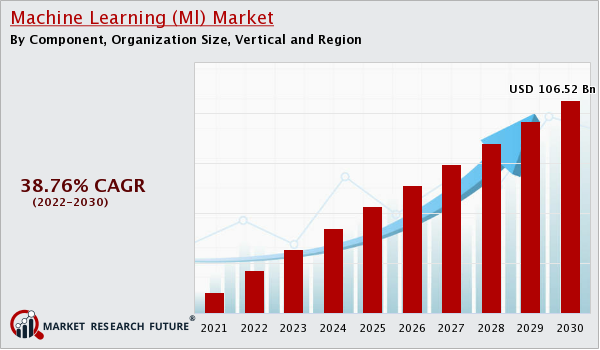Most organizations across every industry have accelerated their digital transformation efforts in order to maintain a competitive advantage. If we’re being honest, at this point if your company isn’t facilitating a hybrid work model, they may be losing key employees, missing out on achieving operational efficiency & potentially falling behind. Moving into 2023 and beyond, digital transformation technologies are going to play an even more fundamental role in business moving forward but “how” is the key question.
With 2022 now behind us, what better time to look at the Digital Transformation trends we can expect to see more of in 2023.
Automation
The term “automation” encompasses an enormous number of solutions, all of which aim to minimize human input.
In its simplest form, automation could involve replacing a manual process with an automated one (e.g., swapping a spreadsheet that requires manual input for a system that extracts data and arranges it ready for further processing). A more advanced example of automation is the use of robots to carry out tasks traditionally done by a person.
Automation not only frees up valuable time so people can focus on other value-add tasks, but it also reduces the likelihood of errors occurring, making it a win-win for businesses.
In 2023, we can expect to see automation adoption accelerate further. Gartner forecasts that, by 2024, hyperautomation will enable organizations to lower operational costs by 30 percent.
Artificial Intelligence and Machine Learning
Adoption of artificial intelligence (AI) and machine learning (ML) has accelerated since the onset of the global pandemic, as organizations sought to streamline their working practices and operate as efficiently as possible.
While artificial intelligence usually refers to the ability of computers to emulate human thinking and carry out tasks on their own, machine learning focuses on how said computers can improve themselves and develop their intelligence even further to keep up with the trends in digital transformation.
Worldwide, government and business spending on AI technology will top $500 billion in 2023, according to IDC research. Meanwhile, machine learning will enjoy a growth rate of approximately 38.76% between 2022 and 2030, reaching a value of $106.52 billion by the end of the decade.

Source: Market Research Future
A very recent prime example of this is the huge success of ChatGPT which is an AI-powered chatbot that went public on November 30th & reached 1 Million users less than 1 week after its launch.
Everything as a Service (XaaS)
Everything as a Service – also known as Anything as a Service and often abbreviated to XaaS – refers to the provision of anything. This includes products, tools, and technologies via an “as a service” consumption model (i.e., usually leased and delivered via the cloud).
XaaS affords a number of benefits for organizations, including more predictable OpEx costs, faster implementation of services, and relief for their own IT resources to focus on higher-value projects.
According to market research firm Spherical Insights, the global XaaS market is expected to reach roughly $1.2 trillion by 2030, growing at a CAGR (Compound Annual Growth Rate) of 23.4% during 2021-2030.
Virtual Collaboration
The Modern Workplace Transformation that has taken place over the past two years is nothing short of remarkable. Virtually overnight, we saw organizations from every sector scrambling to facilitate hybrid working to minimize the pandemic’s effects and execute on digital innovation ideas.
Now, hybrid working is firmly here to stay and that means organizations need to have coherent strategies and advanced digital solutions to enable effective virtual collaboration. Anything less and your business users’ productivity will suffer, along with their satisfaction, which is likely to lead to attrition. Companies must use this opportunity to truly take advantage of next-gen digital transformation trends, and position themselves to stay relevant.
According to Fortune Business Insights, the global team collaboration software market is projected to grow from $17.15 billion in 2021 to $40.79 billion in 2028 at a CAGR of 13.2% between 2021 and 2028.
Customer Data Platforms
Today’s consumers want the best experience possible, and they want it consistently every single time they interact with a business. From the first social media touchpoint, to completing your desired action via your website, valuable data can be gathered every step of the way.
In 2023, businesses that harness the value of this data and use it to build hyper-personalized offerings will better serve their customers and stand out among their competitors.
But to make sense of all this data and turn it into useful insights, a Customer Data Platform (CDP) is key. Such software collects and unifies first-party customer data, across a range of touchpoints and sources, to create a single, complete view. It then makes that data available to the people and systems that stand to benefit from it. For example, marketing departments can leverage a CDP to create personalized campaigns that really resonate with their target buyers.
Stay Up To Date With The Latest Trends in Digital Transformation
Here at Yorktel, we have the experience and expertise to help you realize your digital transformation aspirations. As part of our enterprise digital transformation offering, we focus on four key elements to provide a truly comprehensive solution: Modern Workplace, Intelligent Communication, Intelligent Workplaces, and Modern Desktop.
Contact Us or sign up for our newsletter so we can have a conversation about what digital transformation looks like in your organization and help you drive your ambitions forward.
